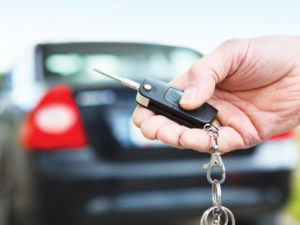Feature: How much risk are your drivers exposed to?
A fleet manager’s main concern is typically the vehicle, but what about the driver? Klaus Allion, managing director at ANT Telecom, warns not to underestimate health and wellbeing of those behind the wheel.

“The reality is that employers have a duty of care to their employees and they must renew their efforts to ensure lone workers are adequately protected.”
Health and safety is of the upmost importance to fleet managers, with plenty of rules being in place surrounding the number of hours a worker can drive for, as well as the amount of breaks they need to take on any given journey. There is also guidance on lifting and moving heavy goods in and out of vehicles. To help managers in their jobs, new technologies have made a big difference. It’s now not uncommon for vehicle fleets to be fitted with GPS trackers and telematics systems to help businesses monitor drivers, as well as to know the location of vehicles and to help monitor the maintenance of them. A broader range of vehicle safety systems – such as CCTV and braking and stability systems – have also been developed and their specification on fleet vehicles is on the up.
Going solo
When it comes to drivers working on business, however, including breakdown recovery drivers and engineers, it’s rare for there to be more than one driver in a cab or van. Therefore, most regularly spend a lot of time on their own, without any contact from other employees or supervisors. This situation classifies them as lone workers. In fact, according to members of the British Security Industry Association (BSIA)’s Lone Worker section, the groups facing the highest levels of risk are drivers, including those working in long-distance HGV road haulage as well as LCV or local delivery drivers.
Having lone workers means increased responsibility for fleet managers – and hauliers and distributors must evaluate the risk their employees are exposed to. It is imperative that the fleet managers are providing the right level of cover to ensure they are as safe as possible. From this scenario, there are two important initial questions for all employers: if something should happen to a driver, how would they know and what process is in place should an emergency arise?
Many drivers travel to locations all over the country – some to very remote locations – and sleep in service centres and laybys when taking breaks. Whilst having trackers and CCTV on vehicles can tick a box in terms of a health and safety and security point of view, they aren’t able to provide extensive protection to an employee when a vehicle is stationary. Many companies may check in with their drivers a few times a week, but what happens if an incident occurs in between checks?
Some companies may even go a step further and provide drivers with lone worker devices with tilt sensors that can alert a colleague to an incident. And though this is a step in the right direction companies shouldn’t just stop there as triggering an alarm doesn’t always mean help will arrive.
The importance of communication
The reality is that employers have a duty of care to their employees and as the regulatory scrutiny of corporate health and safety measures increases, they must renew their efforts to ensure lone workers are adequately protected. The need to provide lone workers with the most appropriate systems of communication has never been greater. To progress, fleet managers should consider reviewing their current means of protecting lone workers – and take an holistic and inclusive approach to developing a more robust system. Through independent advice and thorough environmental analysis, organisations can best develop a customised approach that is fit for purpose.
Know who’s driving

“… know exactly what you’re signing up to when you employ…”
It’s all very well looking after the people driving fleet vehicles, but it pays to make sure you know exactly what you’re signing up to when you employ them. Some employers wrongly believe that by taking a photocopy of an employee’s driving licence means they fully comply with health and safety laws. Others don’t realise that if they ask an employee to pop to the shops in their own car for a pint of milk then they should be treated the same as official company car drivers and are subject to vehicle and driver safety checks.
Some health and safety managers have admitted their bad practice and lack of knowledge about legal responsibilities to their staff who drive for work. The grey fleet was “a grey area” for many with some managers revealing they only knew which staff were driving on their behalf when expense claims were submitted.
Large and small companies are being encouraged to try out fleet risk audits to find out how they could improve and compare their protocols to industry best practice. Those who have used TTC DriverProtect have been keen to discuss how compliance and managing work-related road safety can easily be part of daily work activities, according to the company’s marketing manager Jo Baugh.
“One of the main talking points was grey fleet where one in six businesses do not carry out any checks at all. Some were aware of the need to manage grey fleet but didn’t know where to start,” says Baugh. “Others were doing it to a certain extent but some just did not realise that they actually had grey fleet drivers.
“The rule is simple: if you are driving at work you are driving for work and grey fleet drivers must be treated in exactly the same way as company vehicle drivers,” adds Jo. She also reveals that more than one fifth of drivers and 8% of vehicle owners used out of date documents which meant they were illegal to drive.
With a quarter of all road collisions involving someone driving for work, the responsibility was now on employers to manage and reduce the risks of road traffic incidents for their employees.
TTC DriverProtect helps employers properly manage work related road safety and meet duty of care responsibilities with fleet audits, policy management, driving licence checks, driver risk profiling, e-Learning, in-house workshops, on-road driver training, behavioural change and grey fleet management.
ANT Telecomfleet driver riskfleet policyKlaus Allionrisk management







